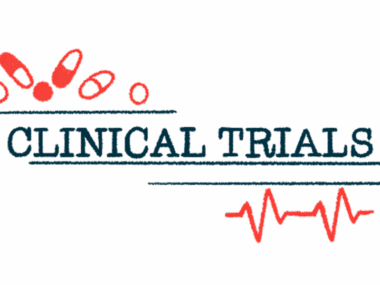ECTRIMS 2023: Foralumab seen to ease brain inflammation in SPMS
5 of 6 patients benefit from treatment over 6 months in access program
Written by |

Six months of treatment with foralumab, administered into the nose, led to decreases in microglial activity in five of six people with nonactive secondary progressive multiple sclerosis (SPMS) involved in an expanded access program.
Microglia are resident immune cells in the brain believed to play a role in driving inflammation and nerve damage in multiple sclerosis (MS).
The new data were shared at the European Committee for Treatment and Research in Multiple Sclerosis (ECTRIMS) and the Americas Committee for Treatment and Research in Multiple Sclerosis (ACTRIMS) joint meeting, held Oct. 11-13 in Milan and online.
The poster was titled “Treatment of six non-active secondary progressive MS patients with nasal anti-CD3 monoclonal antibody (Foralumab): safety, biomarker, and disability outcomes.” Tiziana Life Sciences, the company developing foralumab, funded the work.
The data “is very encouraging and will enable us to rapidly advance foralumab in Phase 2a testing to address patients … with this [devastating] disease who currently have no FDA-approved treatments available,” Gabriele Cerrone, chairman, acting CEO and founder of Tiziana, said in a company press release.
2 patients on foralumab for over 1 year
Most people with MS are initially diagnosed with relapsing-remitting disease (RRMS), which is marked by relapses where symptoms suddenly worsen, followed by periods of remission in which symptoms ease. Over time, many people with RRMS go on to develop SPMS, characterized by disability that continually worsens independent of relapse activity.
Some people with SPMS still will experience relapses. This is referred to as active SPMS, and in the U.S., most treatments approved for RRMS are also authorized for use in active SPMS.
People with SPMS who don’t experience relapses are said to have nonactive SPMS. Non-relapsing types of MS like this historically have proven much less responsive to available therapies. Moreover, only one medication to date — mitoxantrone — has been authorized in the U.S. for people with nonactive SPMS.
Foralumab is an antibody-based therapy delivered through the nose that’s designed to inhibit the activation of T-cells. The activation of this type of immune cells is thought to play a central role in MS-driving inflammation. Foralumab specifically targets a T-cell protein called CD3.
The poster presented at the ECTRIMS-ACTRIMS meeting shared data from six people with nonactive SPMS who received foralumab through expanded access programs. Two patients were in single-patient access programs while the other four were in an intermediate-size expanded access program that will enroll up to eight patients.
All of the patients had experienced clinical disease progression despite treatment with available disease-modifying therapies. Each was given foralumab in three-week cycles: 50 micrograms sprayed into each nostril three times per week for two weeks, then a week off of treatment.
The first two patients now have been on foralumab for more than a year, and the other four have been followed for at least six months. The experimental therapy has thus far been well tolerated, with no severe side effects reported.
Data from PET scans of the brain showed that, after six months of treatment, five of the six patients showed a reduction in activity of microglia, which are a type of inflammatory brain cell. The sixth patient showed an increase in microglial activity at six months.
“Upon review of the baseline and six-month PET scans of the latest cohort of four Expanded Access patients, three out of the four scans suggested a qualitative reduction in the microglial PET signal,” said Tarun Singhal, MD, co-author of the poster and an assistant professor at Harvard Medical School.
“When combined with my assessment of the first two Expanded Access patients at six months, five of the six suggested a reduction in qualitative microglial PET signal,” he added.
Plans for a larger study are in the works
Three-month PET data also had shown that five patients had reduced microglial activity while a sixth had increased activity. The sole patient with more activity at three months had less activity at six months, while the individual with increased activity at six months had shown decreased activity in the three-month scan, the researchers noted.
“With six patients now dosed in our [nonactive SPMS expanded access] program, I feel that Dr. Singhal’s readout of the six-month PET scans strongly supports our previously announced 3-month clinical findings,” said Howard L. Weiner, MD, chairman of Tiziana’s scientific advisory board.
Overall disability scores, as measured by the Expanded Disability Status Scale (EDSS), decreased in two patients, suggesting less severe disability after six months on foralumab. In the other four patients, EDSS scores were stable over the six months of treatment.
Three patients experienced improvements in a test of walking ability, and four reported less severe fatigue after six months on foralumab. These values were largely stable for the remaining patients.
“All 6 patients experienced improvement in at least one clinical measure … and 5/6 showed improvement on microglial PET imaging at six months,” the scientists concluded.
Singhal said that the data so far are “promising from an imaging standpoint,” adding that “further studies are needed to confirm these findings using additional quantitative approaches.”
All 6 patients experienced improvement in at least one clinical measure … and 5/6 showed improvement on microglial PET imaging at six months.
Tiziana now is planning a Phase 2a clinical trial to continue investigating foralumab in nonactive SPMS patients. The company is looking for about 6-10 clinical sites to conduct the study, and patient screening is expected to start in November.
While foralumab has been dosed at the clinic among expanded access participants, patients in the program, and in the upcoming clinical trial, will now be able to self-administer the therapy, allowing them to receive treatment in the comfort of their homes.
This comes on the heels of a U.S. Food and Drug Administration allowance for at-home dosing. The agency also has collaborated with Tiziana in the development of materials to train patients in the use of the nasal device.
“Since the beginning of the [nonactive SPMS expanded access] program, patients have been going to the MS clinic at Mass General Brigham to receive their 3-times a week dosing. Now, these patients will only need to go to the clinic once every 3 weeks,” William A. Clementi, chief development officer of Tiziana, said in another press release.
Cerrone added that “the FDA’s approval for home dosing of Foralumab will transform the way patients manage their condition, offering them greater control over their treatment schedules and the convenience of receiving care in their familiar environment.”
Note: The Multiple Sclerosis News Today team is providing in-depth coverage of the 9th joint ECTRIMS-ACTRIMS meeting Oct. 11–13. Go here to see the latest stories from the conference.







